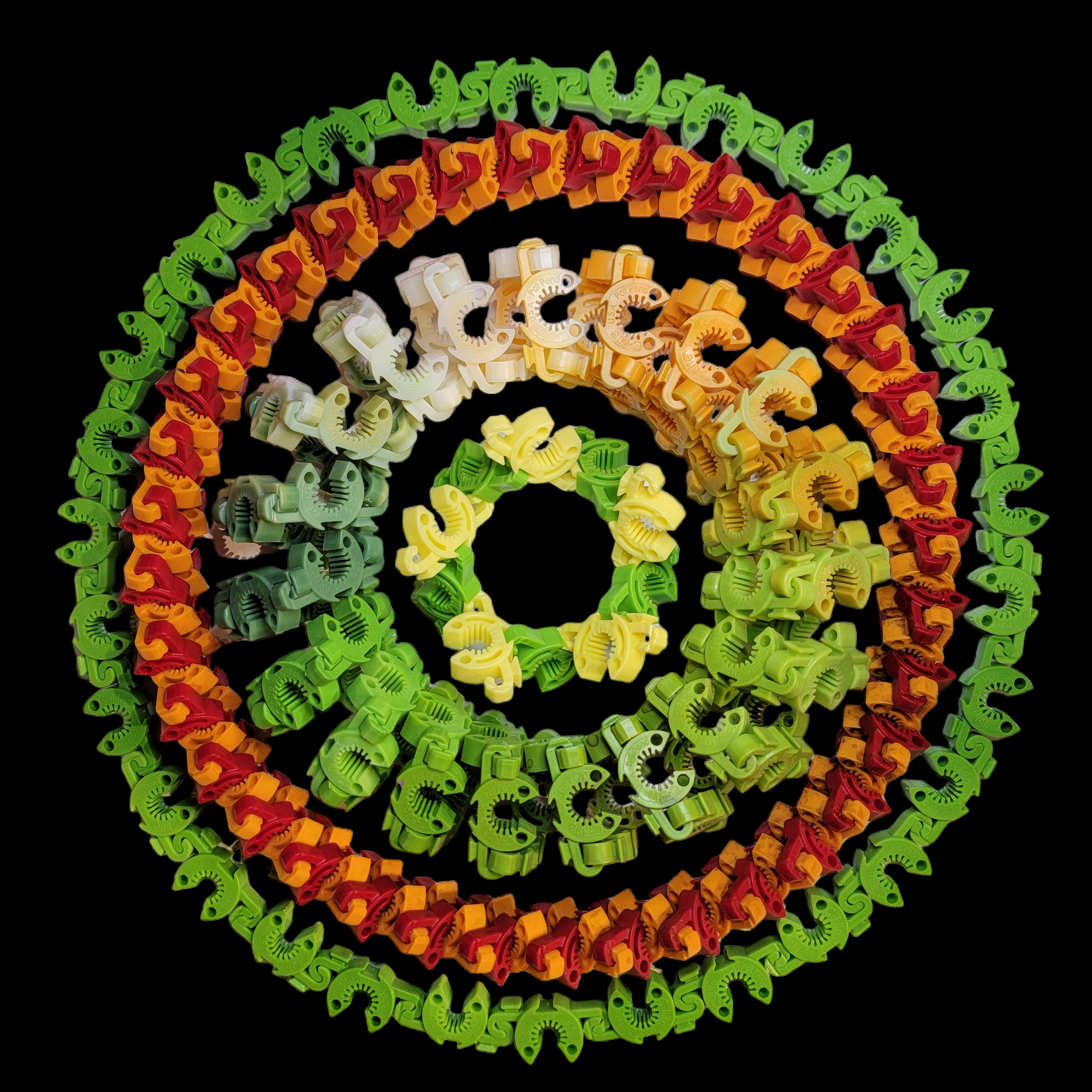C-BITE Is The Garden Clip That Plays Too
When you visit @cbite_guy on Instagram, one thing becomes clear: C-BITEs aren’t merely functional garden tools — they’re toys. You’ll see whimsical sculptures, inventive gadgets, and mashups with classic construction toys.
(The inventor, Jason Rider aka “C-BITE Guy,” uses them in art and all sorts of offbeat builds.)

Originally designed as stake-connecting clips for plants, C-BITEs turn out to be ideal building modules — tiny nodes that “snap” into form. Two C-BITEs can connect in multiple orientations, and in fact, Jason remarks that two clips can fit together in 152+ solid ways (versus 47 ways for two 2x4 Lego bricks) when you count all their orientations and connection points.
That combinatorial richness makes them a powerful tool for imaginative builders!!
Why C-BITE Works as a Toy / Construction Element
Here are the key properties that make C-BITE thrive in a play environment:
-
Many connection modes
Each clip has multiple faces, teeth, holes, and prongs. You can join clips to clips, or clips to stakes, at various angles. The number of possible configurations grows rapidly as you add more elements. -
Cross-compatibility with other toy systems
Because C-BITEs are grippy and modular, you can often attach them to LEGO studs, K’nex rods, or other small-structure systems. This lets you build hybrid contraptions — mix plant clips with toy parts. -
Structural rigidity despite small size
The clip design is engineered to hold tension and resist bending. That gives your mini-structures surprising strength for their size. -
Open-ended play
Unlike a fixed toy with instructions, C-BITE invites experimentation. You’re not just assembling a predefined model — you’re designing new ones. That’s pure maker play.
From stick forts and towers to mechanical contraptions (swords, slingshots, rubber-band guns, mini catapults), the possibilities scale with imagination and incremental builds.
Hands-On Play & Geometry Discovery
One of the best perks of using C-BITE in play is its educational side: it encourages learners (kids, teens, even adults) to explore geometry, symmetry, forces, and spatial reasoning — all while building something tangible.
-
Angles & planar geometry
When you connect clips at non-right angles, you start to see geometric shapes (triangles, trapezoids, irregular polygons). You can experiment: “What happens if I change this connector’s orientation?” -
Structural integrity & load paths
As you add weight (a rubber band, small projectile, or hanging object), you begin to see how forces travel through the nodes and supports — a hands-on intro to bridge and truss design. -
Modularity & combinatorics
Counting possible connections, requesting symmetry, or building fractal-like branches all nurture combinatorial thinking and systematic creativity. -
Iterative prototyping
Because C-BITEs are easy to snap apart and reconfigure, you can test, fail, rebuild — exactly like engineers do. The “toy” becomes a prototyping playground.
Sample Play Projects with C-BITE
Here’s a list of fun builds you can try (or showcase) that integrate garden and toy ideas:
| Project | Description / Tips |
|---|---|
| Stick Fort / Mini Shelter | Use long garden stakes, connect with C-BITEs as nodes, and drape fabric or tarps over. |
| Mini Catapult / Slingshot | Use the natural tension to build a catapult or rubber band frame. |
| Sword / Staff / Wand | Build a rigid line of clips over a stake; |
| Bridge / Truss Module | Combine triangular modules for tension and load-testing. |
| Mixed Toy Hybrid | Snap C-BITEs to LEGO pieces, rods, or panels and build hybrid pieces. Use to suspend or interconnect different elements. |
| Art Sculpture / Mobiles | Use the clips to suspend light elements, wire, or small objects. |

